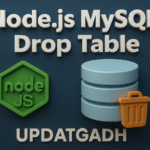
Key Python Notes for Beginners and Enthusiasts
Key Python Notes for Beginners
Key Python notes for beginners include mastering syntax, variables, data types, loops, and functions. Familiarity with conditional statements, lists, dictionaries, and error handling also strengthens foundational skills, making Python easier to learn and apply effectively.

🔹 1. Basics of Python
- Variables: Used to store data (e.g.,
x = 5,name = "Alice",pi = 3.14). - Data Types: Common types include
int(integer),float(decimal),str(string),list,tuple,dict, andset. - Comments: Use
#for single-line and''' '''for multi-line comments to make your code easy to understand.
🔹 2. Control Flow
- If-Else Statements: Make decisions in your code.
age = 20
if age >= 18:
print("Adult")
else:
print("Minor")
- Loops: Repeat tasks easily.
- For Loop: For fixed repetitions.
python for i in range(5): print(i) - While Loop: Continue until a condition changes.
python count = 0 while count < 5: print(count) count += 1
Download New Real Time Projects :-Click here
🔹 3. Functions
In Python, a function is a reusable block of code that performs a specific task. Functions are defined using the def keyword, followed by a name, parameters (optional), and a body of code. They simplify coding and increase efficiency.
def greet(name):
return f"Hello, {name}!"
print(greet("Alice"))
🔹 4. Essential Data Structures
- Lists: Ordered, mutable collections (e.g.,
fruits = ["apple", "banana"]). - Dictionaries: Key-value pairs for fast lookups (e.g.,
person = {"name": "Alice", "age": 25}). - Sets: Unordered, unique items.
- Tuples: Ordered but immutable collections.
https://updategadh.com/category/php-project
🔹 5. Introduction to OOP (Object-Oriented Programming)
In Python, Object-Oriented Programming (OOP) is a paradigm that centers on creating objects—instances of classes—to model real-world concepts. Python’s OOP principles include encapsulation, inheritance, polymorphism, and abstraction, enabling organized, reusable, and modular code. With classes as blueprints, Python’s OOP approach simplifies complex code structures, enhancing maintainability and making it ideal for scalable applications and projects.
OOP in Python allows organizing code with Classes and Objects for modular and reusable code.
class Dog:
def __init__(self, name):
self.name = name
def bark(self):
print(f"{self.name} says Woof!")
my_dog = Dog("Buddy")
my_dog.bark()
🔹 6. Modules and Packages
Use import to access external code, libraries, and functions:
import math
print(math.sqrt(16))
🔹 7. File Handling
Easily read from and write to files:
with open("file.txt", "w") as file:
file.write("Hello, Python!")
🔹 8. Exception Handling
Catch and manage errors using try, except, and finally:
try:
result = 10 / 0
except ZeroDivisionError:
print("Cannot divide by zero.")
finally:
print("Finished.")
🔹 9. List Comprehensions
Quickly create lists in a single line:
squares = [x**2 for x in range(10)]
🔹 10. Python Libraries to Explore
- NumPy for mathematical operations.
- Pandas for data analysis.
- Matplotlib for visualization.
- Flask/Django for web development.
- Requests for HTTP requests.
- Tkinter for building GUIs.
🔑 Learning Tips
- Practice consistently.
- Solve coding challenges and small projects.
- Look for help and tutorials in the Python community.
Keep these notes handy as you explore Python, and feel free to share with fellow Python learners! 🚀
- python notes for beginners pdf download
- python notes pdf
- python notes pdf free download
- python notes pdf for bca
- python notes for beginners download
- python notes pdf 2024
- python basics pdf
- python notes for professionals pdf
- key python notes for beginners pdf
- key python notes for beginners pdf free download
- key python notes for beginners w3schools
- key python notes for beginners pdf download
- key python notes for beginners free download
- key python notes for beginners free










Post Comment